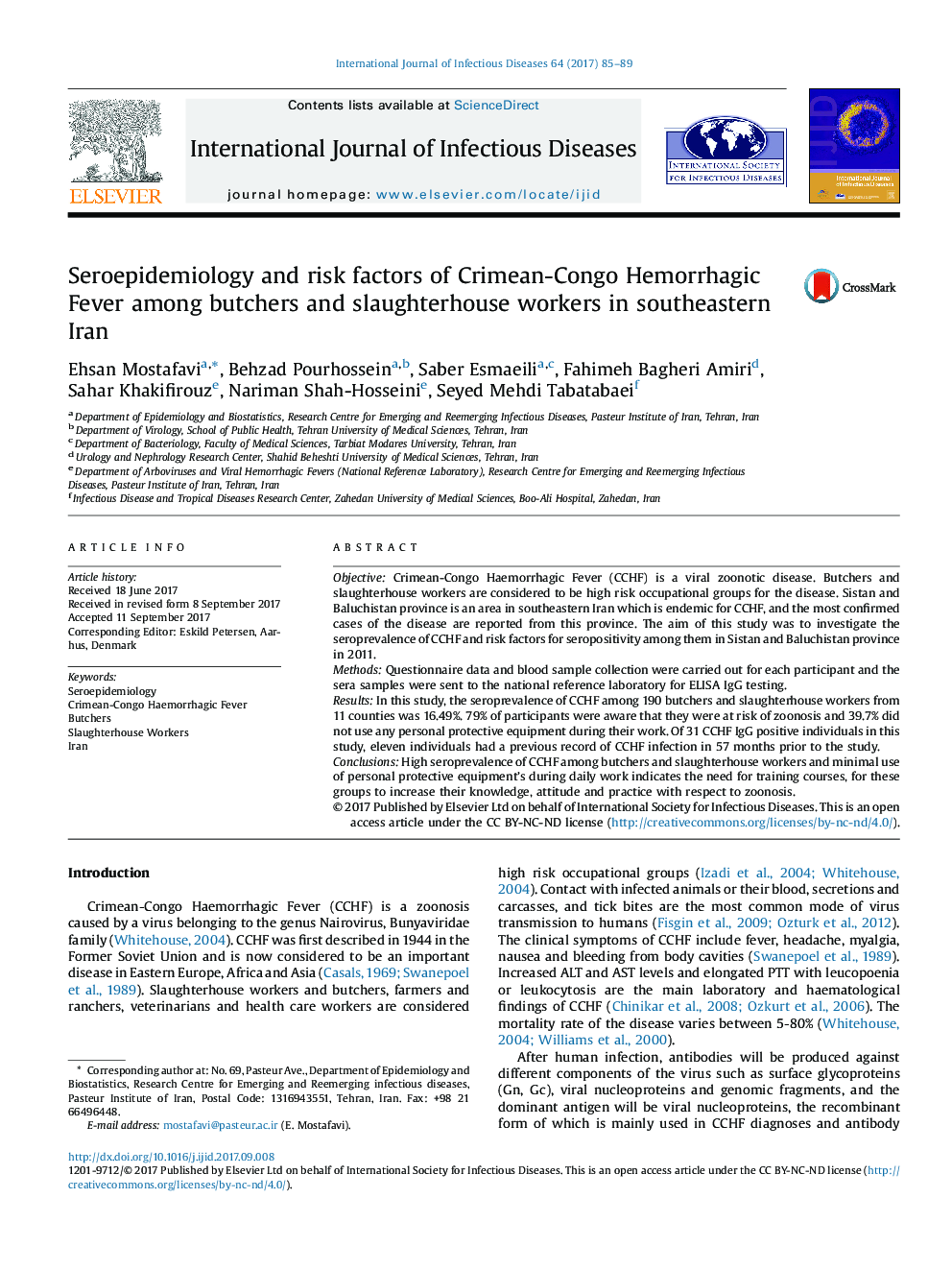| کد مقاله | کد نشریه | سال انتشار | مقاله انگلیسی | نسخه تمام متن |
|---|---|---|---|---|
| 5667273 | 1592029 | 2017 | 5 صفحه PDF | دانلود رایگان |
- In this study CCHF seroprevalence was high (16.49%) among butchers and slaughterhouse workers in Iran.
- Individuals with a longer length of employment had significantly higher levels of CCHF seropositivity.
- Although the butchers and slaughterhouse workers have the highest risk of contracting CCHF, 40% of participants in the study did not use any PPE.
- Based on the findings of this study, anti-CCHF IgG may circulate for more than 9 years.
ObjectiveCrimean-Congo Haemorrhagic Fever (CCHF) is a viral zoonotic disease. Butchers and slaughterhouse workers are considered to be high risk occupational groups for the disease. Sistan and Baluchistan province is an area in southeastern Iran which is endemic for CCHF, and the most confirmed cases of the disease are reported from this province. The aim of this study was to investigate the seroprevalence of CCHF and risk factors for seropositivity among them in Sistan and Baluchistan province in 2011.MethodsQuestionnaire data and blood sample collection were carried out for each participant and the sera samples were sent to the national reference laboratory for ELISA IgG testing.ResultsIn this study, the seroprevalence of CCHF among 190 butchers and slaughterhouse workers from 11 counties was 16.49%. 79% of participants were aware that they were at risk of zoonosis and 39.7% did not use any personal protective equipment during their work. Of 31 CCHF IgG positive individuals in this study, eleven individuals had a previous record of CCHF infection in 57 months prior to the study.ConclusionsHigh seroprevalence of CCHF among butchers and slaughterhouse workers and minimal use of personal protective equipment's during daily work indicates the need for training courses, for these groups to increase their knowledge, attitude and practice with respect to zoonosis.
Journal: International Journal of Infectious Diseases - Volume 64, November 2017, Pages 85-89
